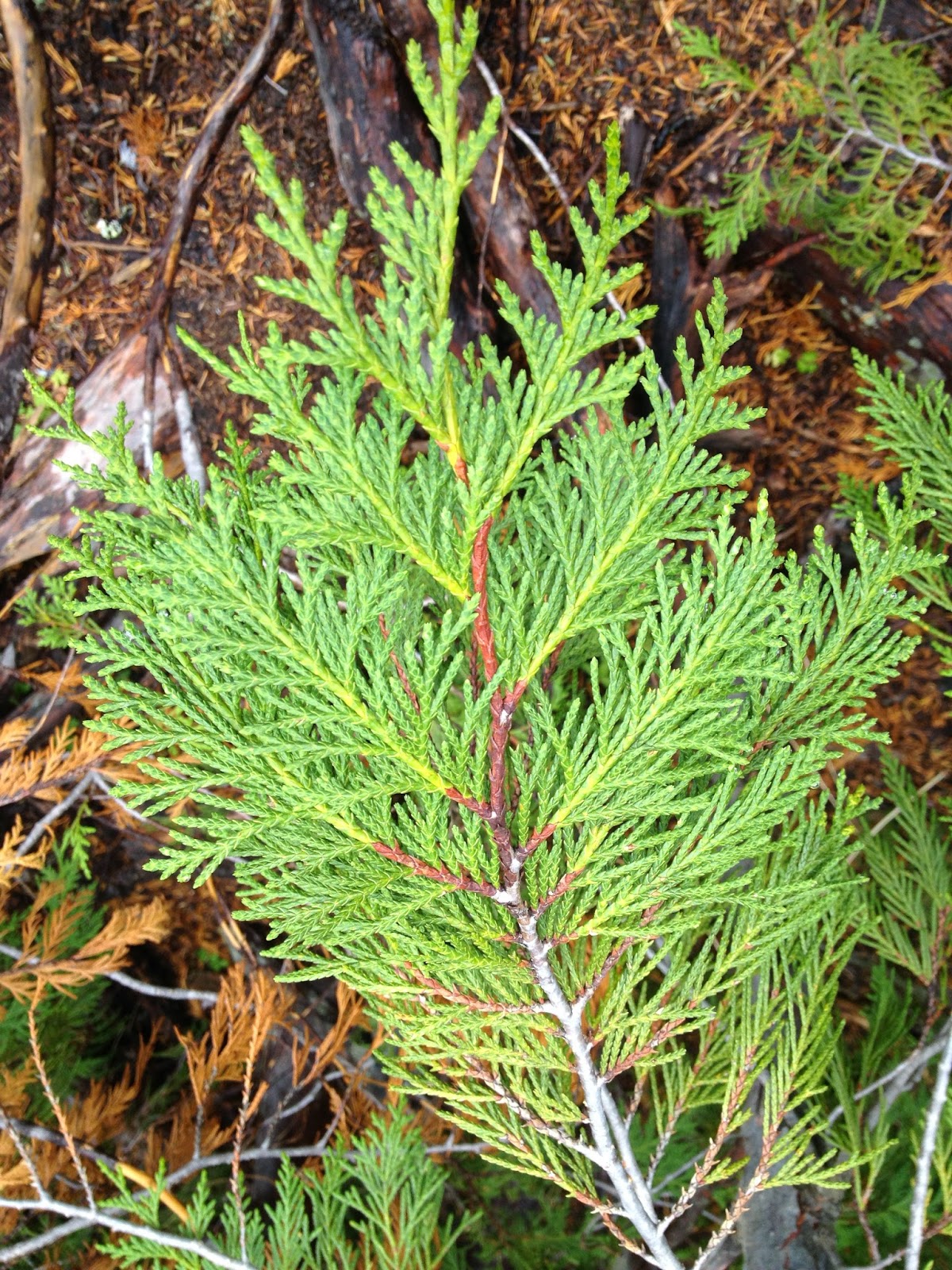This was the first mushrooms I stumbled upon during my trip into the watershed. This is a Shrimp mushroom or Russula xerampelina and it can be characterized by it's bright pink cap with a darker red ring in the center. Also, this specific mushroom can tend to have an almost fishy smell to it which allows it to be easily identified. This fungi was found on the dead conifer and dirt litter near a decomposing tree. The bordering habitat was composed of sword ferns and and water soaked wood that have fallen off of trees. The weather was extremely wet and rainy and this gave the mushrooms and shiny tint to their caps.
This strange mushroom is called Goat's beard or Hericium abietis and can be characterized easily by it's strange physical structure. This fungal formation is different from the usual cap and stem and this allows it to stand out and be distinctive to the wondering eye. Goat's beard is a darkened white in it's early stages of growing but as it ages it retains an almost orange/brown color. When I discovered this fungi, it was at the base of a living tree and seemed to be connected to it's main root. It was surrounded by dead conifer needles and various sticks and twigs. Also, this mushrooms was in a highly dense moss area which might contribute to it's growing ability. The weather outside was very rainy and had been hours before I arrived.
This odd fungal colony on the side of this tree are Angel wings or Pleurocybella porrigens. Charaxterizing this fungus is easy due to its distinctive structure and location of growth. This fungus was found on the side of a nurse log that was covered in various mosses and lichens. These white formations are very smooth on the top and curve downwards but have noticeable gills. The surrounding area was full of moss and ferns with extremely wet and moist ground directly below. Water had collected in some areas on top of the emerging fungi from the rainy weather.
At a distance I first though this was a piece of trash someone had left behind but I soon realized it was a fungus. This thick and hard fungal formation is called Varnished conk or Ganoderma tsugae. This fungus can be characterized by it's fan-like shape and dark orange color on the top of it's structure and a dirty white middle section that collects water droplets. This mushrooms was found emerging out of a wet decomposing log with moss all over mush like the tree that harbored the angel wings. The surrounding area was dead conifer needles and wet patches that have started to form puddles. The weather was still very rainy when I stumbled upon this species.
This fungus is very prominent in the watershed I visit each time yet it is very different from many other species of mushrooms in this area. This mushroom is a type of Chanterelle due to its cap formation and it's distinctive gill structure that is angled upwards.The top of this mushrooms was covered in the dirt that was above it when it emerged out of the soggy ground. This fungus was found on the side of the trail in a thick layer of decomposing conifer needles and dirt with a thin layer of moss on the surface. the surrounding area was dominated by moss and a scattering of twigs and needles but was covered by the canopy of trees above which prevents a lot of water falling directly on the fungus. the weather was very rainy but this mushrooms seemed to be quite dry.
This colorful fungus is called Turkey tail or Trametes veriscolor and can be characterized by it's layers of changing colors and it's resemblance to the tail feathers of a turkey. I has a wet and slimy coat over it and is quite stiff with touched. This fungus was found emerging off of a tree that had half submerged in pond water and the other half suspended in the air at a horizontal angle. The surrounding area was extremely wet since it was right next to a pond and it had been raining earlier. Also, it coexisted with moss on this old and damp log and shared it with no other noticeable fungi. The weather was still very rainy and it had been rainy for a long time while I was in my natural area.





.JPG)











.JPG)
.JPG)

_copy.jpg)
.jpeg)
.jpeg)
.jpeg)

.jpeg)